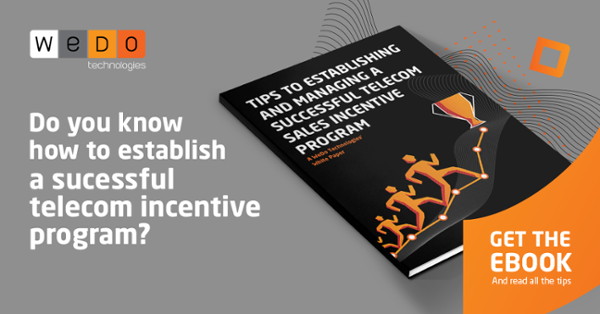As your business changes, the way you compensate your sales force needs to change too.
To create new revenue streams and improve margins, operators are investing in their networks to offer more sophisticated services and support new business models for complex B2B2X ecosystems.
As competition intensifies, the customer is the key beneficiary. Service provider sales teams may be left wanting, when incentive plans and commissions are not in step with the business strategy and complex business models they are meant to support.
So, what are the key requirements for an effective incentive compensation management (ICM) system that supports the sales strategies of today’s digital era?
Developed by telecom experts for telecom experts
Cost is one of the biggest barriers when determining whether to purchase general-purpose incentive management software, or a solution designed specifically for the telecom industry. Generic ICM solutions are designed to be used by any business, cross industry, whereas specialised solutions are built from the ground up to meet the specific requirements of network operators and the telecom industry. However, a manufacturing business and a logistics company have different structures, processes, needs, and customers that are significantly different from the telecom sector, which involves point-of-sale shops that are supported by indirect distribution networks, B2B sales force, internal salespeople and external sales reps managed by dealers.
In addition to managing the complex hierarchies and multi-dealer environment, service providers also need an ICM solution that rewards the right behaviours. With a telecom-specific incentive management solution that comes with pre-built incentive plans, less time is required for customisation when industry best-practices are already built in. Communication Service Providers (CSPs) can measure the appropriate key performance indicators (KPIs) and encourage sales teams to focus on extracting more value from subscribers, rather than just focusing on acquiring new ones.
Greater accuracy
Accuracy in payments is one of the most critical aspects to a successful incentive compensation program – from both the CSP and sales person’s perspective. It has been estimated that 8% of all sales compensation expenditures are overpayments, due to CSPs relying on spreadsheets and manually merging data to calculate payments. Not only is this time consuming, but it is also extremely error prone. From a sales person’s perspective, inaccurate payments can foster resentment and suspicion, leading to mistrust of the CSP. Instead, CSPs can garner trust with their sales team by providing greater transparency and accuracy in their payment calculations with a self-service portal that provides reports and analysis, self-explanatory, easy-to-understand figures, graphs, and data to help answer frequently asked questions, all designed to reduce the occurrence of disputes.
Empowering incentive management teams
Today, incentive management teams rely on information technology (IT) to make updates and changes to their incentive plans. They are often required to work with multiple sources of disparate data, making it difficult to ensure timely and accurate payments, or to reconcile disputes and fix errors in payments. By having pre-integrated incentive plans tailored to meet the specific needs of network operators, incentive teams can quickly configure new plan rules and variables without writing code. This is particularly important, as business strategies evolve.
It is increasingly critical to empower incentive management teams with greater automation, tracking and assessing the plans’ effectiveness and simulating the impact that new incentive plans will have prior to being launched. But don’t just take our word for it.
WeDo Technologies incentives solution is a complete suite that manages the entire life cycle of the telecom sales incentive compensation process: 1) plan creation, 2) calculation, 3) payment and 4) monitoring, which also includes territory and case management. Digi had an urgent need to automate their incentives process in order to support its new services, tariff plans, and commissionable events for each month. However, their internal system had grown out of step with their business strategy. By replacing its internal system with RAID Incentives, Digi reported the following:
• Incentive plans processing time reduced by 90%
• Number of monthly payouts increased by 2x
• Adjustments and ‘claw backs’ were done 8x faster
• Payment accuracy increase in 10%
For any other information or any given question, please feel free to Contact Us here.
Cover image credit: Photo by rawpixel on Unsplash




Let Us Know What You Thought about this Post.
Put your Comment Below.